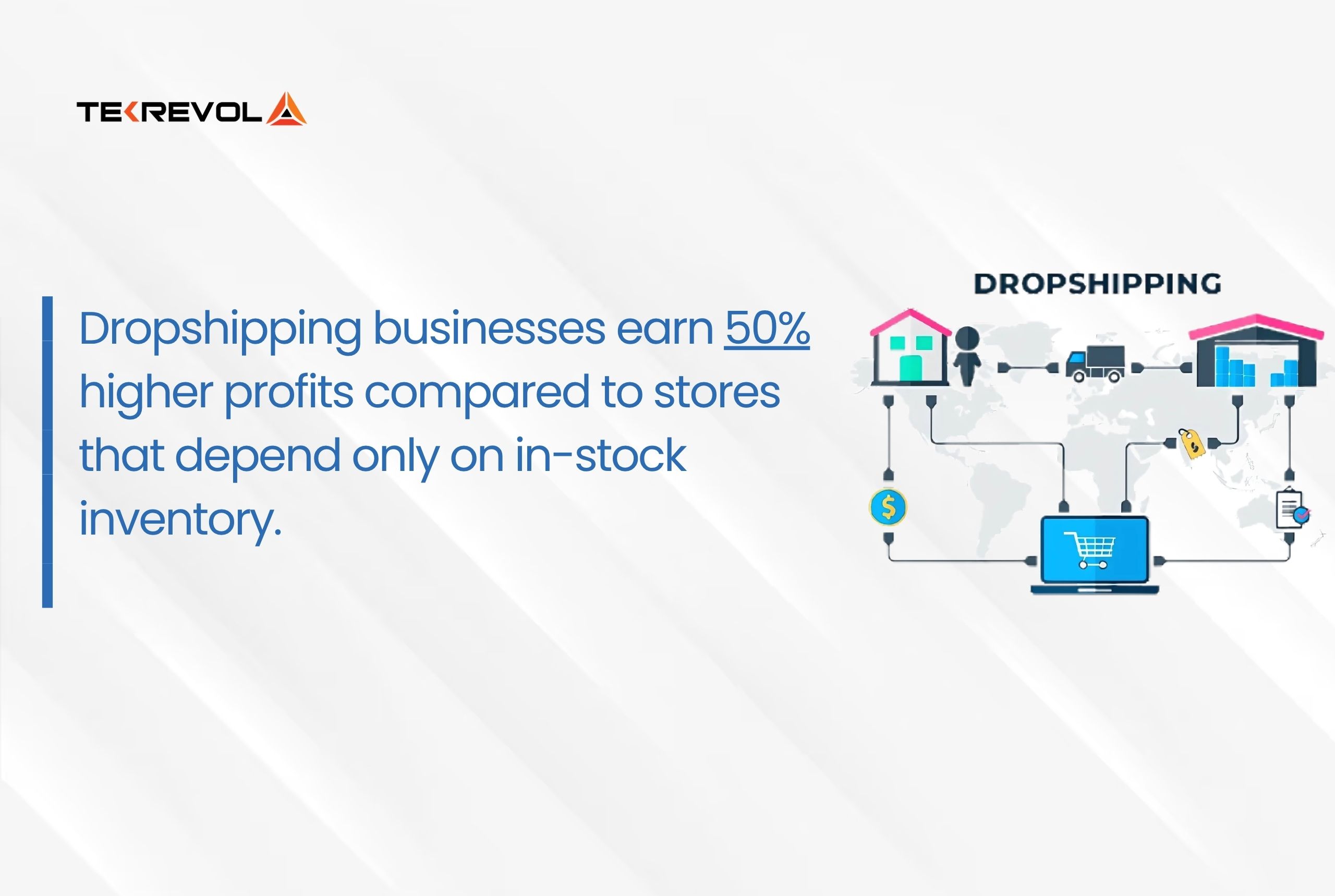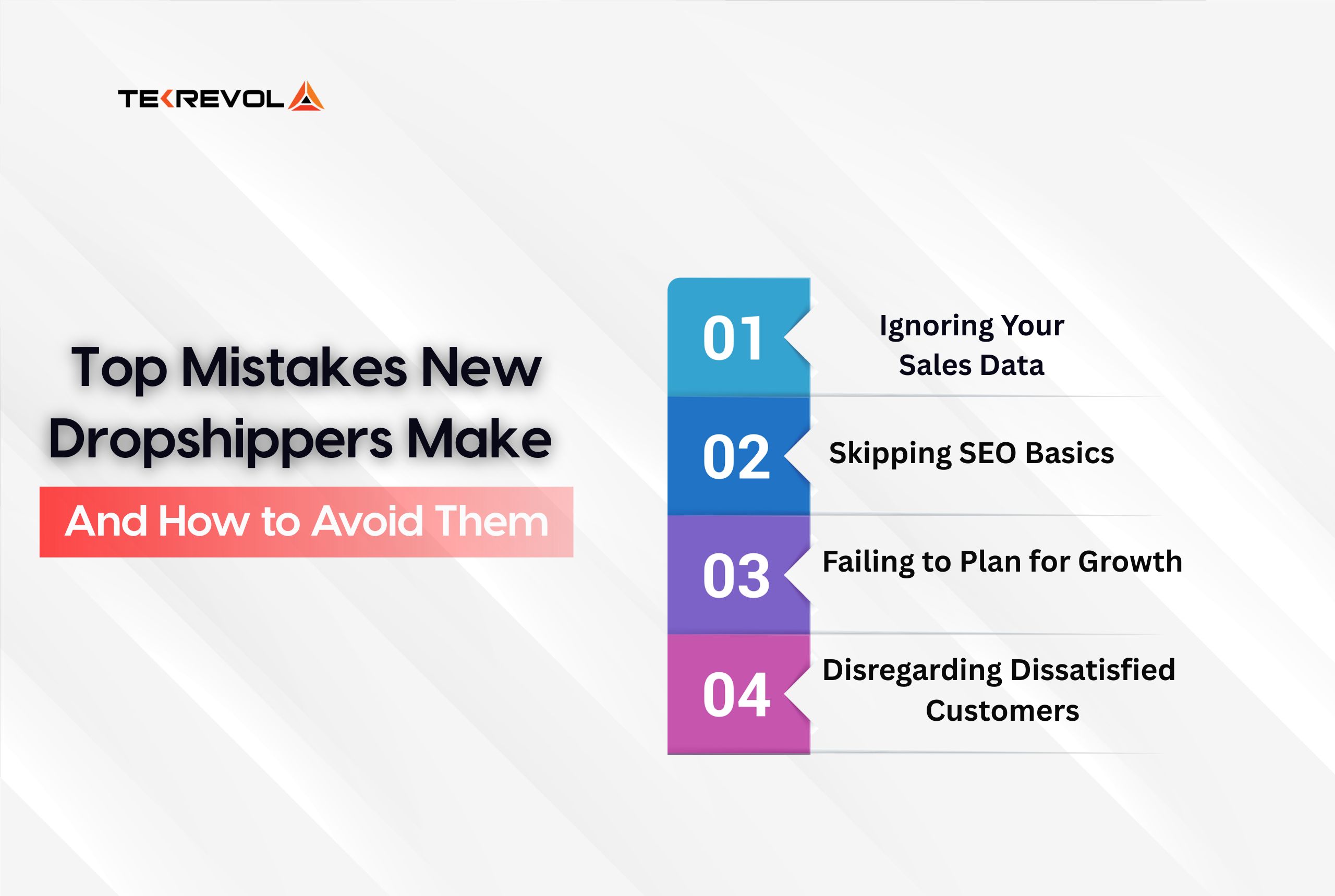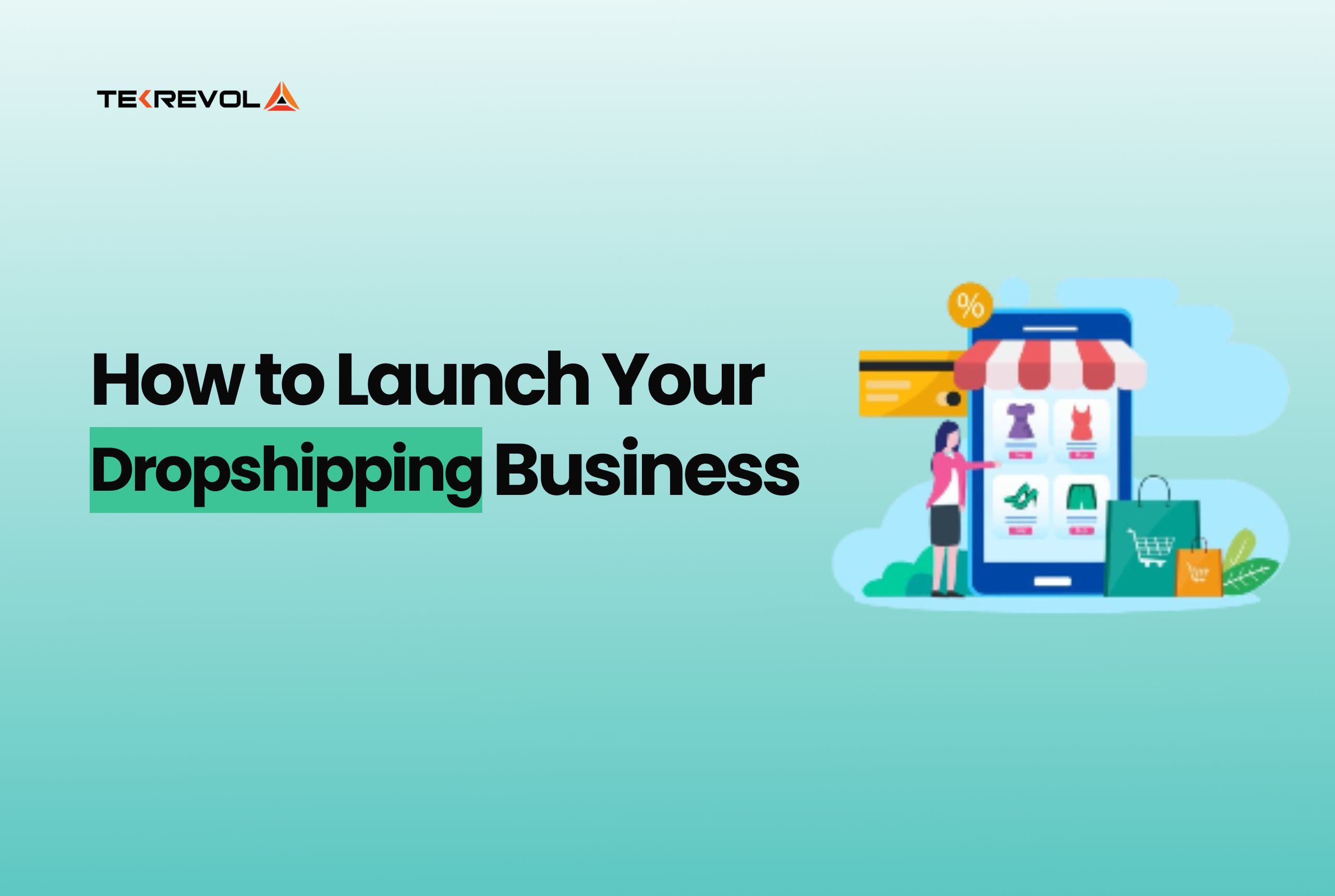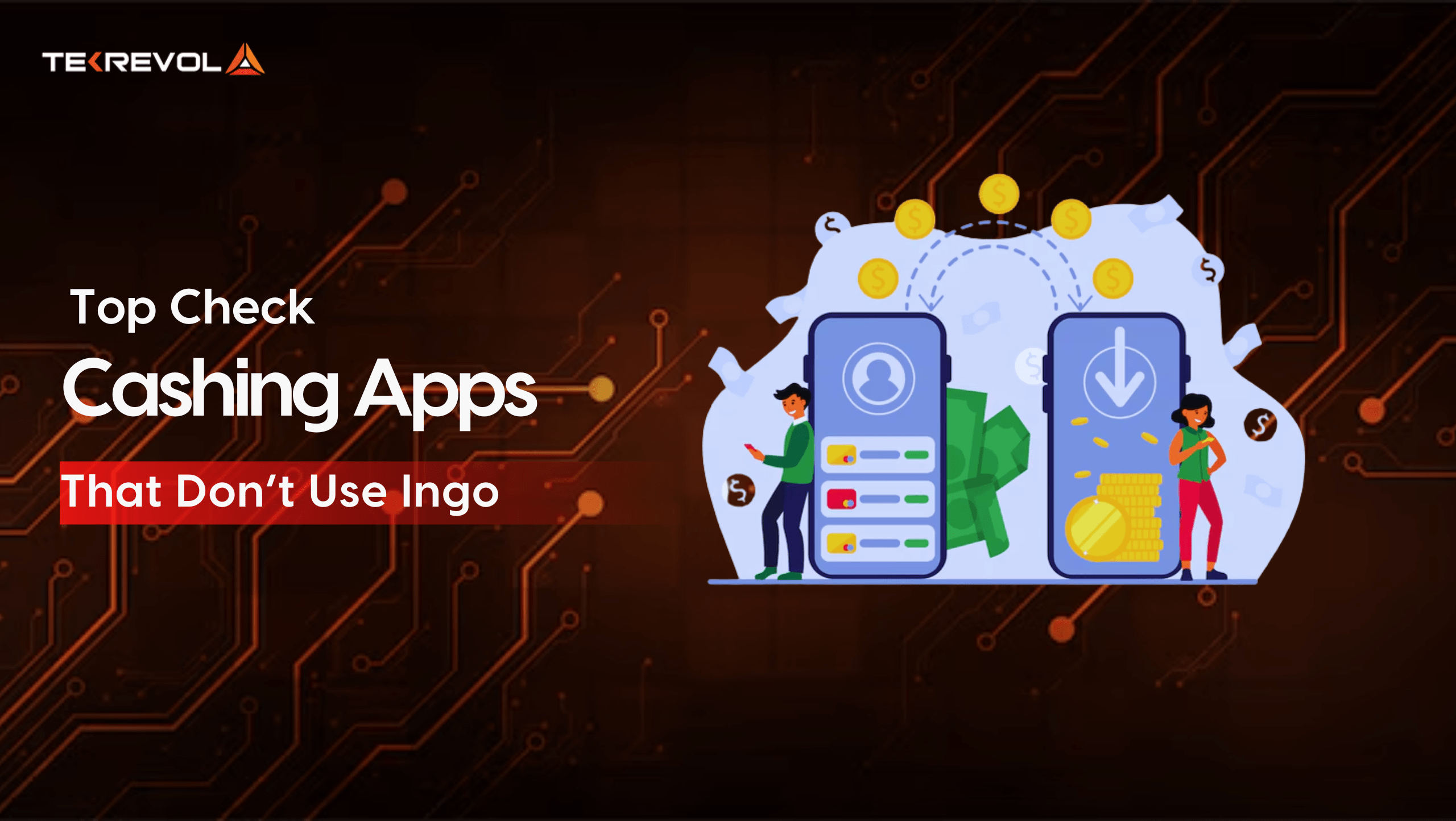You’re not new to the concept of dropshipping. You’ve done your research, explored product ideas, and maybe even set up a trial store.
But now? It’s time to level up. To launch a successful dropshipping business in 2025, it is vital to embrace data, automation, and branding, and get rid of guessing.
Dropshipping is said to be among the easiest methods to get into eCommerce; however, success certainly does not lie in just planning a store, holding your breath, and hoping for sales.
While the global dropshipping market is expected to reach $464 billion by the end of this year, the failure rate alarmingly remains, with more than 90% of newly set-up dropshipping businesses shutting down in the first half of the year. The difference between opportunity and outcome depends largely on planning, positioning, and flawless execution.
Nowadays, to create a successful drop shipping business, it is not enough to have a list of the hottest-selling goods, but to provide a good digital experience. That means collaborating with the right ecommerce development company to create a fast, intuitive, and conversion-optimized shopping platform.
In this blog, we will tell you all you need to know to start a dropshipping business successfully in 2025.

What Is Dropshipping & Why It’s Worth It in 2025?
In dropshipping, retailers operate as middlemen, offering products online without holding inventory. Storage and shipping are performed by the supplier. By 2025, the model will still be popular among entrepreneurs due to its small investment and scalability. But everything will depend on the strategic placement in an incredibly competitive environment.
Now, why is dropshipping so worthwhile in 2025?
It’s one of the lowest-risk methods of beginning an online business in today’s time. In fact, the dropshipping industry is projected to reach a market valuation of $557.9 billion by 2025. You don’t have to invest in bulk stock or warehouse space. Just a product catalog, a good supplier, and a nicely designed website.

Here’s why it remains a wise decision in 2025:
- Low Startup Costs: No initial inventory = small investment.
- Easy to Launch: Just a store and a supplier.
- Scalable: Add new products without adding overhead.
- Global Reach: Sell anywhere in the world.
Is Dropshipping Right for You? Here’s What to Consider in 2025
Dropshipping businesses earn 50% higher profits compared to stores that depend only on in-stock inventory.
Before diving into dropshipping, it’s important to weigh the pros and cons. This simple table breaks down the advantages and disadvantages to help you decide.
| Pros | Cons |
| Low startup costs | Lower profit margins |
| No need to manage inventory | Limited control over product quality |
| Easy to run from anywhere | Shipping delays from third-party suppliers |
| Wide product range available | Hard to stand out in a competitive market |
| Scales easily with minimal effort | Customer support challenges |
How to Start a Dropshipping Business That Actually Succeeds in 2025?
To start a dropshipping company, select an Evergreen niche, carry out thorough competitive analysis, find better suppliers, set up your store (Shopify is arguably the best option), and promote products to the appropriate audience. Here is a further breakdown:
Step 1: Select a Niche That Makes Sense (and Money)
After finding dropshipping to your liking, the next step will be to focus on your niche. And that involves discovering your niche.
A niche is just a clearly delineated market niche, like “eco-friendly baby equipment” or “computing gadgets for digital nomads.” To go niche by way of explanation enables you to differentiate yourself and address a particular audience directly, instead of attempting to sell something to everyone and everything.
There are two intelligent approaches to discovering your niche:
1. Follow What You Know or Love
If you care about or know about something, let’s say, home exercise, gaming peripherals, or pets, you’re already ahead of the game. You’ll know your audience and what products may interest them.
2. Let the Data Lead the Way
Don’t know what to sell? That’s okay. Don’t know what to sell? That’s okay. Use research tools like Google Trends, Keywords Everywhere, and Facebook Audience Insights to find out what people are searching for right now and what is trending upwards. Look for product categories that have had sustained and steady interest, as opposed to passing fads.
Step 2: Blend Keyword and Product Research
Don’t just stop at keyword trends. Drill down with product research tools, one that’s available in AliExpress, Spocket, or DSers, that reveal what’s selling the most.
- Search by product type and sort by order quantity or customer ratings.
- Cross-check the demand with keyword tools.
- Seek steady interest rather than sporadic viral sensations.
Tip: Some reverse the process. They select a supplier or product line first, then create a niche from what is available, making fulfillment easier.
Step 3: Research the Competition to Find Out What Works (and What Doesn’t)
You must know how those in your niche are doing, what they’re doing right, and where you have space to excel before you can launch.
Here’s the way to do effective competitor research:
- Begin With a Google Search
- Enter keywords associated with your niche and notice who consistently shows up in the results. Those are your direct competitors.
Notice:
- Product titles and descriptions
- Pricing tactics
- Shipping details
- Customer reviews
Pro tip: Plug in SEO tools such as Ubersuggest or Ahrefs to find out what long-tail keywords they’re competing for.
Leverage Competitor Analysis Tools
Similarweb, SEMrush, or SpyFu tools enable you to examine your competitors’:
- Website traffic and visitor patterns
- Traffic sources (organic vs paid)
- Ad campaigns and keyword emphasis
Look at their posts, engagement, and tone. Are they creating how-to videos, product tips, or lifestyle posts? What types of posts get viral? This allows you to form your own content strategy and know what works with your mutual audience.
Don’t Forget Online Marketplaces
Go to Amazon, Etsy, and eBay. Look for the products you wish to sell and check out:
- Listing formats
- Reviews and ratings
- Price range and offers
In case you feel like it is a saturated market, then think of the ways you could differentiate yourself, maybe by improving the quality of your product, shipping faster, better product description, and images.
Step 4: Choose a Supplier You Trust Will Deliver
Your supplier is the invisible sidekick in your business, the person in charge of fulfillment, quality management, and shipping. Which means your customer experience is completely linked to how good or great your supplier is.
The following is what to look up when deciding on the appropriate dropshipping supplier:
- Speedy & Efficient Delivery: Find out how long it takes the supplier to deliver, especially when the supplier has warehouses in your area. This avoids the delay for too long a time and unsatisfied clients.
- Inventory Management: Choose a supplier that has good inventory monitoring mechanisms to avoid being out of stock.
- Refund Policy and Returns: Research about their handling policy regarding returns. The simpler the better you can retain the customers and minimize the losses.
- Track Record & Reviews: Read some reviews provided by other sellers before selecting a supplier.
- International Shipping Considerations: If ordering from abroad, familiarize yourself with customs charges, tariffs, and HS codes to prevent surprise charges or shipping delays.
Step 5: Curate the Right Products and Set Smart Prices
What to sell is one of the biggest decisions to make in dropshipping. Since the vast majority of dropshippers will use the same supplier product catalogs, what will allow you to differentiate will be product selection and price optimization.
How to Choose Winning Products:
- Match your niche: Promote products that will stimulate the desires and needs of your target audience.
- Evaluate the supplier performance: Take into account seller ratings, customer reviews, and fulfilment/delivery history.
- Sample orders: Purchase sample orders of the products to avoid using them unexpectedly.
- Logistics: Pick suppliers that have their warehouses in the near vicinity of your target markets, or introduce fast shipping services like ePacket or local shipping.
Avoid This Common Mistake: Poor Pricing
To remain profitable, you must include:
- Product cost from the supplier
- Shipping charges
- Platform charges (Shopify, payment processing, etc.)
- Marketing and operational expenses
After you’ve got your overall cost, determine a margin that fits, usually between 20% and 60%, depending on product category. Further, review competitors’ prices to ensure you’re competitive and still making a profit.

Step 6: Build Your Online Store
Your site is the online front entrance to your dropshipping store. It’s where customers surf, discover, and (hopefully) purchase.
What Your Store Needs To Have:
- A clean, mobile-responsive design
- Quality product photos and descriptions
- Customer testimonials and social proof
- Informative content (FAQs, blogs, buying guides)
- Smooth checkout experience
Need help setting up your Shopify store? We’ve created a beginner-friendly guide just for you. Don’t miss our blog: How to Start a Shopify Store in 2025, it’s packed with practical steps, tools, and tips to launch confidently.
Step 7: Select the Proper Business Structure
As your shop is coming into being, it is time to make it legitimate. This means that the way you structure your business means taxes, liability, and legal obligations will depend on that.
Typical Business Structures for Dropshippers:
| Business Type | Pros | Cons |
| Sole Proprietorship | Easiest to start, no formal paperwork needed | No separation between personal and business assets |
| LLC (Limited Liability Company) | Protects personal assets, flexible taxation | Requires registration and annual fees |
| C Corporation | Ideal for scaling and investors | More complex, subject to double taxation |
Don’t Forget to Get an EIN
Regardless of which form you decide on, you will probably need an Employer Identification Number (EIN) from the IRS. It’s necessary for:
- Filing taxes
- Opening a business bank account
- Registering with suppliers and marketplaces
You can get an EIN online for free through the IRS website
Step 8: Set Up Your Business Finances
Keeping your business finances separate from your finances is essential for staying organized, tracking growth, and avoiding accounting headaches. Here’s a financial Setup Checklist
| Task | Why It’s Important |
| Open a business bank account | Keeps income and expenses separate and makes tax filing easier |
| Apply for a business credit card | Helps manage expenses like ads, software, and orders, and may offer rewards |
| Check for a business license | Ensures you’re compliant with local regulations |
| Register for sales tax (if needed) | Some U.S. states require you to collect sales tax from customers |
Step 9: Promote Your Dropshipping Business
Now that your store is live, it’s time to drive traffic and get sales. Dropshipping success depends on visibility, so here are the top marketing strategies to help your store stand out.
Marketing channels you should focus on:
| Marketing Strategy | What It Does |
| Paid Ads (Facebook, Google, TikTok) | Reach new customers fast and test what messaging works best |
| Influencer Marketing | Build trust and tap into ready-made audiences via creators on Instagram or TikTok |
| Content Marketing | Use blogs, videos, or tutorials to boost SEO and educate your audience |
| Niche Communities | Engage in forums, Reddit threads, or Facebook groups related to your products |
| Mobile Marketing (SMS) | Send promo codes or updates directly to customers’ phones, great for engagement |
| Email Marketing | Keep in touch with visitors and customers; send offers, updates, and tips |

Top Mistakes New Dropshippers Make And How to Avoid Them
Some common dropshipping errors are picking the wrong niche, not conducting adequate product research, overdependence on one supplier, and unrealistic assumptions regarding profit and time to success. Here is a closer examination of common dropshipping errors:

Mistake #1: Ignoring Your Sales Data
Operating a store without monitoring sales is flying blind. Check in on:
- Best-sellers and poor-performing products
- Ad spend vs. actual return
- Profit margins per item
- Customer locations and devices employed
- Trends and patterns over time
Why it matters: Your data informs you what’s selling, and what’s burning cash. Focus more on what’s working and cut out the products that aren’t performing.
Mistake #2: Skipping SEO Basics
If you can’t be found online, customers won’t buy from you. Pay attention to:
- Writing clean, unique product descriptions
- Making your site mobile-friendly
- Reducing page loading times
- Including related keywords in titles and headings
Tip: Utilize free resources such as Google Search Console to monitor how your store is ranking and where you can increase visibility.
SEO is a long-term asset for your store’s success. Make sure you’re using the most effective strategies. Read our guide on Top Advanced SEO Techniques for 2025 to get started.
Mistake #3: Failing to Plan for Growth
It’s okay to start small, but failing to plan can halt you from growing. Avoid:
- Relying on one supplier (always have backups!)
- Manually processing every order.
- Sticking with tools or systems that can’t handle high volume
Use automation apps for inventory updates, order fulfillment, and emails, so you’re ready when traffic spikes.
Mistake #4: Disregarding Dissatisfied Customers
Even if you’re not physically dealing with products, you’re still on the hook for customer satisfaction. To sidestep negative reviews and refund claims:
- Pen honest, accurate product descriptions
- Make it simple for customers to reach out to you
- Answer questions promptly and respectfully
- Address returns and issues before involving the supplier
Tip: Utilize AI chatbots or auto-responders to respond immediately, even when you’re offline.
How Much Does it Cost to Start a Dropshipping Business?
One of the greatest benefits of dropshipping is the minimal initial investment. The average cost to launch a basic dropshipping store is between $500 and $1,000.
You don’t have to spend money on inventory, a warehouse, or packing supplies. Yet, you will have to allocate funds for necessary tools and services to launch your store.
Here’s an estimated breakdown of the common startup expenses in 2025:
| Expense | Estimated Cost (USD) | Details |
| Domain Name | $10 – $20 (per year) | Your custom store URL (e.g., mystore.com) |
| eCommerce Platform | $29 – $79/month | Shopify is a common choice; the cost depends on the plan |
| Dropshipping Apps | $0 – $50/month | Tools like DSers, Spocket, or Zendrop |
| Logo/Branding | $0 – $100 (one-time) | Use free tools or hire a designer via Fiverr or Canva Pro |
| Product Samples | $30 – $100 (optional) | Recommended to test product quality before selling |
| Marketing Budget | $100 – $500/month | For ads on Facebook, Instagram, TikTok, or Google |

How TekRevol Helps You Start a Profitable Dropshipping Store?
Want to launch a successful dropshipping business? TekRevol assists you in creating a high-converting online store hassle-free. From the choice of niche to beautiful custom design, we shape your ecommerce presence to be exceptional in today’s competitive market.
We integrate robust automation capabilities to simplify product sourcing, order processing, and inventory management, so you can concentrate on building your brand, not logistics. And our marketing assistance means your store receives the traffic and conversions necessary to thrive.
With a successful history as a top Shopify development agency, we specialize in creating scalable, intuitive, and sales-oriented dropshipping stores.












